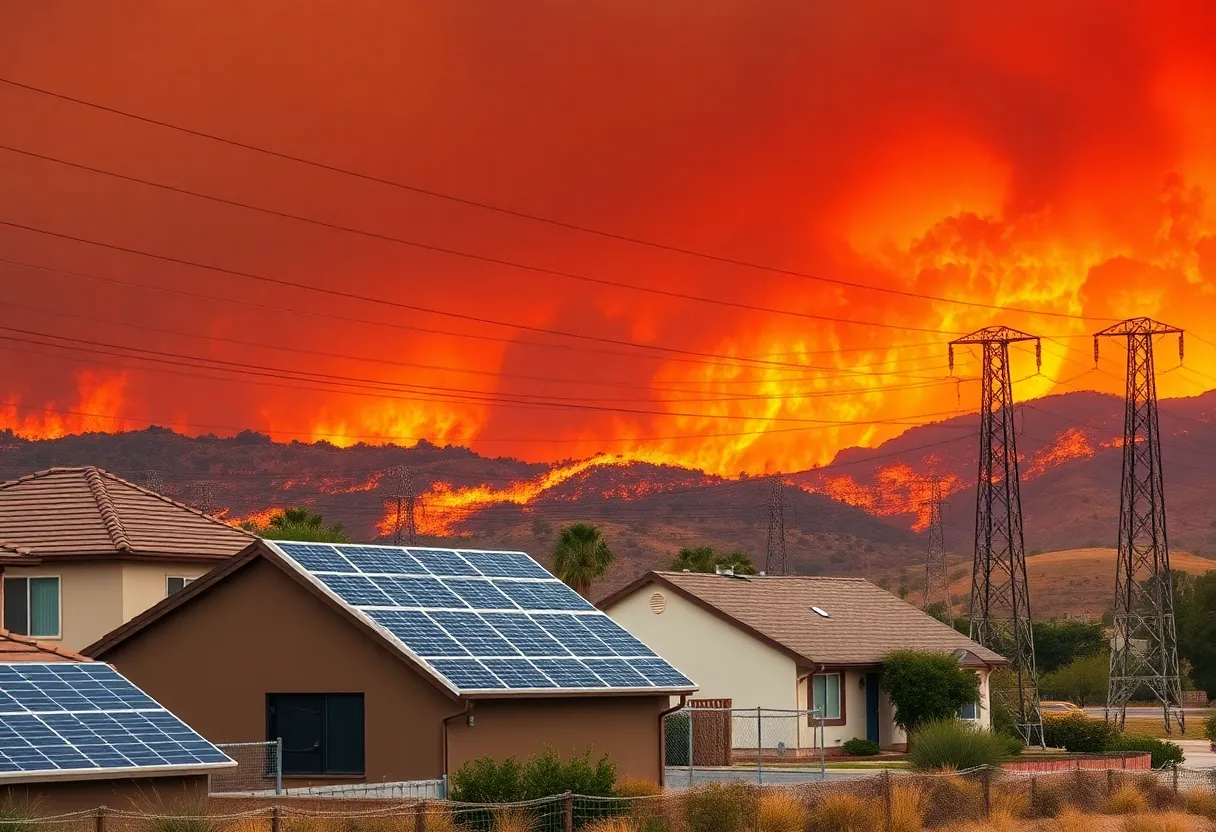California, August 21, 2025
News Summary
California’s Demand Side Grid Support (DSGS) program is at risk of losing $100 million in funding, potentially impacting energy costs and grid reliability. Launched in 2022, DSGS has enabled over 100,000 residential batteries to participate in energy outputs during peak demand, showcasing the effectiveness of home storage systems. Advocates, including energy organizations, are urging state legislators to restore funding to ensure California maintains a reliable and affordable energy system, especially in the face of rising energy challenges.
California Facing Cuts to Demand Side Grid Support Program Amid Energy Crisis
California’s Demand Side Grid Support (DSGS) program is at risk of severe funding cuts, which could jeopardize the state’s efforts to reduce energy costs and enhance power grid reliability. Proposed budget reductions aim to alleviate a budget shortfall, potentially slashing $100 million from the program, which has become increasingly vital for managing the state’s energy demands.
The DSGS program, launched in 2022, has played a significant role in increasing California’s energy capacity through residential batteries. On July 29, 2023, over 100,000 residential batteries participated in a virtual power plant test, achieving a production output of 539 MW between 7 and 9 p.m. This event showcased the aggregate power of home storage systems, providing a reliable energy source during peak demand hours.
Prominent solar companies Tesla and Sunrun dominate the DSGS capacity, contributing significantly to its operational successes. A report from the Brattle Group estimates that the program could yield net system cost savings ranging from $28 million to $206 million through 2028, indicating its financial viability as well as its importance for grid stability.
Advocacy and Potential Benefits
Supporters argue that cutting the DSGS funding would strip away proven and cost-effective solutions that help ensure the affordability and reliability of California’s energy. The current DSGS program requires at least $75 million in funding for 2026, as well as sustained multi-year investments to maintain the confidence of investors and stakeholders in its future.
Energy organizations, including PG&E, have highlighted their involvement in testing virtual power plant (VPP) initiatives, assessing various ways to meet grid demands. The July battery dispatch test illustrated the capacity of demand-side resources to perform equivalently to traditional power plants, with over 88% of the output generated by batteries enrolled in the DSGS program.
Calls for Funding Restoration
The coalition of advocates, led by Advanced Energy United, is urging state legislators to reconsider the proposed funding cuts not only for the DSGS program but also for the Distributed Electricity Backup Assets program. They emphasize the critical need for a permanent funding pathway, arguing that cutting support at this stage would significantly undermine California’s progress toward developing a dependable and sustainable distributed energy resource network.
Program Background
The DSGS program was introduced as part of California’s Strategic Reliability Reserve to address the grid reliability challenges exacerbated by extreme weather events such as wildfires and heatwaves. It allows residential battery owners to receive compensation for providing grid services during critical times, reducing the pressure on the overall electricity infrastructure.
As battery capacity continues to grow—projected to potentially double over the next three years to over 1 GW—there remains a significant opportunity to harness California’s residential battery capabilities effectively. Tesla Energy has emphasized that the current residential battery capacity totals over 1.8 GW, indicating substantial untapped potential in the state’s efforts to enhance energy management.
Challenges Ahead
Despite the initial successes of the DSGS program and its rapid growth from experimental phases to a fully functional model in just three years, ongoing challenges in securing long-term funding and regulatory support remain. Decisive action from California lawmakers will be crucial in determining the fate of this essential program in the face of rising energy costs and reliability challenges.
FAQs
What is the Demand Side Grid Support (DSGS) program?
The DSGS program is a California initiative that enables residential battery owners to supply power to the grid, particularly during peak demand periods. It was launched in response to grid reliability issues caused by extreme weather events.
Why are funding cuts being proposed for the DSGS program?
Proposed budget cuts aim to address a state budget shortfall, which includes a reduction of $100 million from necessary funding initially promised for the DSGS program.
What benefits does the DSGS program provide for California?
The DSGS program helps reduce energy costs, supports grid reliability by providing additional energy during peak periods, and offers net system cost savings estimated between $28 million and $206 million from 2023 to 2028.
What role do Tesla and Sunrun play in the DSGS program?
Tesla and Sunrun are the leading contributors to the DSGS capacity, providing substantial input through residential battery systems that collectively enhance the program’s power generation capabilities.
Key Features of the Demand Side Grid Support Program
| Feature | Description |
|---|---|
| Initial Launch | 2022, as part of California’s Strategic Reliability Reserve |
| Capacity | Participation from over 100,000 residential batteries |
| Output Achievement | 539 MW during peak demand hours |
| Cost Savings Potential | Estimated net system cost savings range from $28 million to $206 million through 2028 |
| Funding Requirements | At least $75 million needed for 2026 and ongoing multi-year support essential |
| Key Contributors | Tesla and Sunrun dominate the DSGS capacity |
Deeper Dive: News & Info About This Topic
- Canary Media: California Demand Side Grid Support Benefits
- Wikipedia: Virtual Power Plant
- Utility Dive: California’s Virtual Power Plant Could Save $206M by 2028
- Encyclopedia Britannica: Electricity
- RTO Insider: Budget Cuts Threaten California VPP Program

Author: STAFF HERE HUNTINGTON BEACH
The Huntington Beach Staff Writer represents the experienced team at HEREHuntingtonBeach.com, your go-to source for actionable local news and information in Huntington Beach, Orange County, and beyond. Specializing in "news you can use," we cover essential topics like product reviews for personal and business needs, local business directories, politics, real estate trends, neighborhood insights, and state news affecting the area—with deep expertise drawn from years of dedicated reporting and strong community input, including local press releases and business updates. We deliver top reporting on high-value events such as the Huntington Beach Surf City USA Marathon, the U.S. Open of Surfing, Fourth of July celebrations at the Huntington Beach Pier, and community festivals at Huntington Beach Central Park. Our coverage extends to key organizations like the Huntington Beach Chamber of Commerce and Visit Huntington Beach, plus leading businesses in retail, hospitality, and outdoor recreation that drive the local economy. As part of the broader HERE network, including HEREAnaheim.com, HERECostaMesa.com, HERESantaAna.com, and HERELosAngeles.com, we provide comprehensive, credible insights into Southern California's dynamic landscape.





